 |

Part 2
The second part of the ANCESTORS IN THE AMERICAS series unfolds with the arrival of Chinese on the West Coast during the Gold Rush, not as coolies laboring in the bleak outposts of the New World's plantations and mines, but as free men embarking for "Gold Mountain." Pushed by hard times at home, they arrived full of hope for wealth and for an auspicious return to their homeland. An early scene in CHINESE IN THE FRONTIER WEST: An American Story imagines a Chinese man's departure from his wife and homeland. We see the young wife silently braiding her husband's long queue (hair), perhaps for the last time. Setting out, like so many others, the traveler glances back at her over his shoulder. What does the future hold for them and their descendants? The close-up on his face, a recurring image in the film, captures an intensely personal moment in a new chapter of world history. Could these Chinese pioneers, who came seeking gold, have imagined the pivotal role they would play in building the American west? Or that they would challenge and change laws that would eventually reshape our nation's definition of who is an American? How little their contribution was understood at that time...how little it is known even today. CHINESE IN THE FRONTIER WEST uncovers a surprising and complicated web of relationships—economic, social, cultural and legal—between 19th-century Chinese immigrants and other white and nonwhite pioneers who came to America's western territories from all parts of the globe. The film's narrative reveals the strength of these American ancestors, who, upon arrival, met with unremitting suspicion and hostility, yet managed to sustain their embattled community and culture, and help build a nation. The Chinese were the first nonwhite foreigners who arrived en masse of their own free will, unlike shackled African Americans, who were brought as slaves, or Native Americans, who were decimated in their own land. Yet like these other non-white peoples, Chinese immigrants were prevented from owning property or becoming citizens. They were also subject to violent attacks and new laws enforced only against them, such as the Foreign Miner's Tax. Despite this treatment, we see how during the three decades encompassed by the film (1850-1882), Chinese labor became an essential underpinning in the developing economy. In taxes from gold mining alone, the Chinese contributed up to 50% of the state's total revenue by 1860. In addition to working on the transcontinental railroad that eventually linked the frontier west to markets back east, Chinese laborers hand-built aqueducts to transport water and timber, bridges and flood-control levees, and some of the first wineries in the state, where they carved the storage caverns and constructed massive stone buildings. The Chinese also reclaimed swamp land and transformed the Sacramento delta into one of the world's great farming lands. By 1870, three quarters of the agricultural work force at every level in California were Chinese.
Many of their contributions can still be seen today in rural California, as the film shows. Yet, their contributions are missing from most historical records, such as photographs of the building of the railroad and standard textbooks on the development of the west. None of their contributions were perhaps more long lasting and significant to all Americans than their struggles to advance civil rights for themselves and the immigrants that followed. Denied the basic right of citizenship, the Chinese forged an alternative route to becoming Americans: they relentlessly pursued their rights in America's courts. They turned to the justice system precisely because they understood and believed in the American promise of equality and freedom. "People always say, As a mostly male community that had organized itself to survive, Chinese workers sent money back to China, to their wives, families and villages. But their collective well-being in America was repeatedly attacked through ordinances, acts and court rulings designed to make life more difficult. These included the 1854 Foreign Miner's Tax and the 1862 Police Tax, as well as court decisions such as People vs. Hall, which cast them as inferior to whites and denied them the right to testify against any white person, even an accused murderer. It was natural for them to ante up a portion of their earnings to fight these discriminatory laws. They hired seasoned lawyers and challenged almost every law or court case enacted against them, sometimes with great success. The hundreds of cases they brought in the 19th and early 20th centuries helped establish legal precedents across life's broad spectrum, from livelihood and education to immigrant rights and citizenship. "It's hard to think of a single law perceived by the Chinese as discriminatory, that they did not challenge in court." And what about Chinese women? As the film shows, Chinese women customarily did not leave home. Furthermore, the frontier hardships and often violent discrimination suffered by Chinese men in America were hardly promising conditions for family life. Records suggest about one third of the early Chinese arrivals were married, even though the ratio of men to women in the Chinese community was at one time as high as 27 to 1. In the resulting largely male, so-called "bachelor" Chinese community in America, a few Chinese men saw a business opportunity and imported Chinese women whom they pressed into prostitution. While prostitution was a general feature of the frontier west, the existence of Chinese prostitution gave Congress an excuse to pass the Page Law in 1875, specifically aimed at preventing Chinese women—including family members of Chinese immigrants—from entering the U.S. Not until 1970, almost 100 years later, following the major overhaul of immigration laws in 1965, did the Chinese community finally achieve a normal gender ratio of one man to one woman. Towards the end of the film, we ask: What if Chinese women had been permitted to come and they could have had families? How would this history have been different?
Where other pioneers saw Point Alones as useless economically, the Chinese envisioned and built a thriving export industry of dried abalone, abalone shells, seaweed, dried fish and squid. They were able to succeed because white Americans at the time were not interested in fishing occupations, and they lived in the midst of a more tolerant Hispanic community. Although the Chinese were displaced by the turn of the century, they still managed to build families of three generations standing, and to create some wealth from uninterrupted entrepreneurial resourcefulness. "And so we basically extended By the late 1800s, centuries of seafaring and labor migration had led these resilient immigrants from South China to build a new home in a new land, despite the intense discrimination they faced for many years to come. As scholar Sucheng Chan notes, through their determined collective efforts, they not only helped build the frontier, they also challenged our nation to "make the word 'American' more international in scope, to encompass people from all parts of the world." home | about cet | about Loni Ding | cet productions resources | mailing list | order | site credits | contact us ancestors | guides | documents | discover ancestors Copyright 1998-2017. Center for Educational Telecommunications, Inc. All Rights Reserved.
|
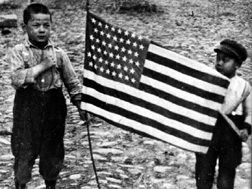 "Leaving their villages in China, they journeyed far, with only each other and the power of memory.... remembering families an ocean apart...remembering how to make a home on the soil under their feet....With spirit and strategy they fought for their place in America." -Narrator
"Leaving their villages in China, they journeyed far, with only each other and the power of memory.... remembering families an ocean apart...remembering how to make a home on the soil under their feet....With spirit and strategy they fought for their place in America." -Narrator  "Let us consider the vile coolies, who like craven beasts work the goldmines only to return to their native land and bring no profit to our state." - John Bigler, California governor 1852- 1856
"Let us consider the vile coolies, who like craven beasts work the goldmines only to return to their native land and bring no profit to our state." - John Bigler, California governor 1852- 1856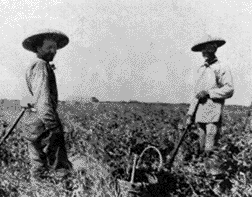 "As it turned out, California's economic development in the 19th century could not have been accomplished without the Chinese. And I can say this unequivocally."
"As it turned out, California's economic development in the 19th century could not have been accomplished without the Chinese. And I can say this unequivocally."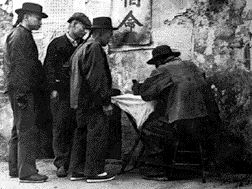 well, the Chinese always cling to their culture, that they never assimilated, they never really learned about America... but in terms of resisting discrimination against them, they very much assimilated. From the early 1850s, they started making use of the American judicial system when such a system did not exist in China."
well, the Chinese always cling to their culture, that they never assimilated, they never really learned about America... but in terms of resisting discrimination against them, they very much assimilated. From the early 1850s, they started making use of the American judicial system when such a system did not exist in China." 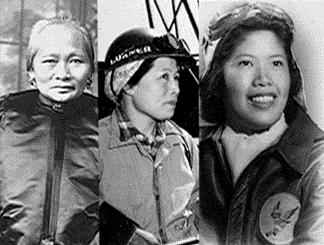 Standing on a coastal stretch not far from Monterey, historian Sandy Lydon shows us a "Chinese America that might have been." He explains that here, in 1853, Chinese men and women built an American community of Chinese families, where women comprised over 40% of the population, and mothers, children and grandparents were all part of the social fabric.
Standing on a coastal stretch not far from Monterey, historian Sandy Lydon shows us a "Chinese America that might have been." He explains that here, in 1853, Chinese men and women built an American community of Chinese families, where women comprised over 40% of the population, and mothers, children and grandparents were all part of the social fabric. 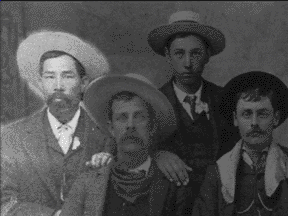 the promise of the American dream to a much wider range of human beings than the founding fathers may have had in mind."
the promise of the American dream to a much wider range of human beings than the founding fathers may have had in mind."



